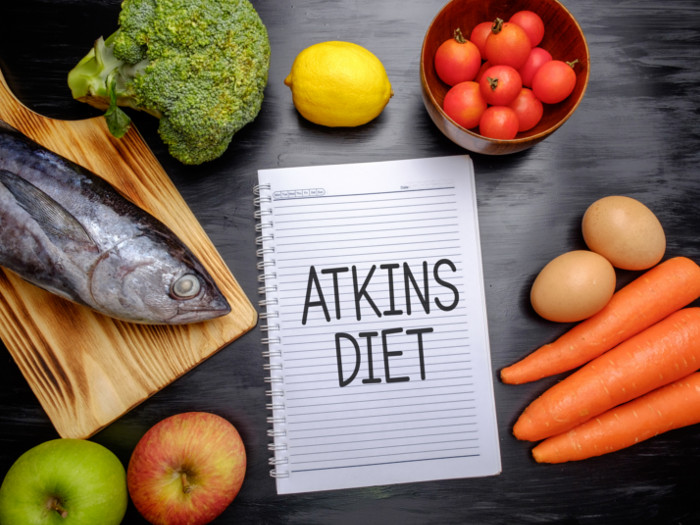The Atkins diet is one of the most popular diets of recent years, but before you try this weight loss diet, it’s best to understand all of its potential effects.
What is the Atkins Diet?
Atkins diet is a diet focused on increasing protein and fat, while significantly decreasing carbohydrate intake in an effort to boost metabolism, immunity and weight loss. This diet is broken up into four different phases to gradually accustom practitioners to their new dietary guidelines, and hopefully, establish good eating habits that can last well into the future. Millions of people have found success following some type of low-carb, high-protein diet, but as with any diet, there are some side effects if it isn’t practiced properly. [1]
How Does It Work?
Atkins diet works by drastically changing your nutrient intake, primarily through eliminating all simple sugars and carbohydrates, shifting most of your calorie intake to lean meats, nutrient-dense proteins, and healthy fats. One of the main ways, this diet works is because the body is forced to burn fats for energy, which is a more efficient form of energy generation. [2]

Atkins diet is mainly a low carbohydrate diet formulated by Robert Atkins. Photo Credit: Shutterstock
Simple carbohydrates like what you find in white flour and junk food are quickly metabolized by the body for short bursts of energy, while any excess of carbohydrates is stored as fat. The high-protein nature of this diet helps to suppress the appetite, which will naturally decrease your calorie intake, thus leading to healthy weight loss over time.
Atkins Diet Plan
As mentioned, the Atkins diet is broken up into 4 phases – induction, balancing, fine-tuning, and maintenance.
Phase 1: Induction
For two weeks, you will consume fewer than 20 grams of carbohydrates each day, restricting your diet to fats and proteins, as well as occasional leafy greens (low-carb vegetables). [3]
Phase 2: Balancing
Staying primarily with high-fat and high-protein foods, you can begin introducing some nuts and beans back to your diet, along with more leafy greens to keep total carb levels low, possibly between 20-30 grams per day.
Phase 3: Fine-Tuning
In this phase, as you approach your goal weight, you can add more complex carbohydrates back into your diets, such as a wider range of vegetables and fruits. Continue on this phase until your weight loss slows down or stops.
Phase 4: Maintenance
At this point, you can add as many healthy carbs back into your diet as you want, but you shouldn’t gain any of the lost weight back. If you see weight gain occurring, go back to the induction phase and begin again.
Benefits of Atkin’s Diet
The many benefits of the Atkins diet include the following: [4]
- Weight loss
- Lower risk of dementia
- Better blood sugar control
- Relieving acne
- Treating polycystic ovarian syndrome (PCOS)
- Preventing headache
- Treating gastroesophageal reflux disease (GERD)
People who are obese or at high risk of increasing cholesterol levels are often recommended to try this diet. The improvement of your nutrient profile, including the intake of more antioxidants and omega-3 fatty acids, can also help with dementia and chronic diseases, such as arthritis, cancer, and coronary heart disease. [5]
The lesser known benefits of this diet include its positive impact on the polycystic ovarian syndrome (PCOS), acne, and acid reflux disease. Some studies have even found that this diet can help to mitigate the symptoms of epilepsy. [6]
Side Effects
Although there are many benefits, drastic dietary changes can always lead to side effects, including the following: [7]
- Fatigue
- Difficulty sleeping
- Gastrointestinal problems
- Mood swings
- Bad breath
- Irritability
- Difficulty with exercise
- Diarrhea
- Hair loss
Before starting the Atkins diet, speak with your doctor about your specific health conditions and potential risks.
